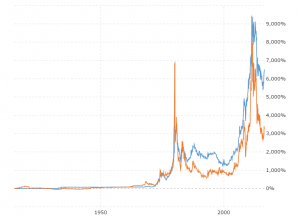Start Collecting Coins (Part 2)
Last week, at a time when we all think about new starts for the New Year, we started talking about taking up coin collecting. We look at the two basic reasons to do so – which are often combined in a single collection – doing it for pleasure and interest and collecting for an investment. That investment can be for the coins value to other collectors, of as speculation on the future value of the metals (gold, silver, etc.) that they are composed of. This week we will look at some of the basic information needed to start collecting.
Coin Terminology
There is a basic language of coins, that you need to know, to navigate your first steps into collecting. Here are some basic terms used for coins, so that you can see what you are getting, and how to talk ‘intelligently’ to a seller.
- Circulation coins: These are the coins in your pocket, made by a country as legal tender for business. These ‘circulate’ around society, from one person t another, as we buy and sell for cash. For a collector, these might be valuable, if they are rare, or have a rare feature, but mostly they would be part of historic collections, not a new collection
- Uncirculated coins: These are the same kind of coins as circulation coins, but they have never been released by banks into circulation. So they will be unmarked and unworn. Always more valuable than the same coin that has been circulated. This term is also used to describe a highly polished coin.
- Proof coins: These are coins that have been more carefully minted, so they have a clearer, crisper finish. Proof coins will usually also be uncirculated.
- Commemorative coins: Many countries use coins to mark special events, or to commemorate the lives of special people, such as presidents. Considered collectible coins, these are often sold without being put into circulation at all – but not always.
- Face value: This is the value stamped on a coin for legal tender purposes. With precious metal coins it may or may not be a true reflection of the actual value of the coin, depending on the market value of the metal at any given time.
- Intrinsic value: The value of the coin to a collector. Important factors in determining it may include its rarity, its historic value, its value to a larger series, or its beauty.
- Obverse: The side of a coins most people call “heads”. It usually does indeed have a head or face on it, often of someone prominent in the country, but it can also have a national emblem – the American Eagle, for example. Most countries use just one or a few obverse designs.
- Reverse: The side of a coin commonly called “tails”. This will have a particular design, often changing yearly, while the obverse remains the same.
- Field: The background area of a coin, onto which the design is placed.
- Relief: The image stamped onto a coin, usually raised up above the field slightly. The coin is stamped with a hard metal ‘die’ that bears a reverse version of the image.
- Rim: Often the outer part of the face of a coin will also be raised above the filed, in a circle. Here any writing is often engraved. Not all coins have a rim.
- Edge: The third side of a coin, created by its thickness. The edge may be smooth or (commonly) serrated, and it is increasingly common for writing to be placed here as well.
- Mint Mark: Coins are made in Mints, which are either government owned or approved (usually). In the case of legal tender especially, a mark, often one or two letters, will be stamped somewhere on the coin to show which particular mint it was made in.
Hopefully these terms will help you come to grips with the descriptions of coins you might want to collect.
Next week, some more tips and advise on starting out as a coin collector.










